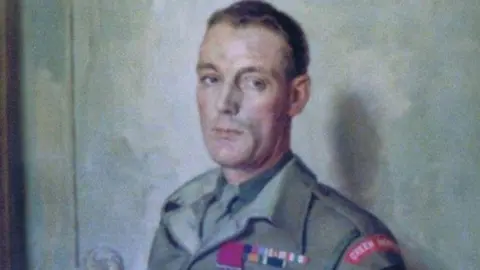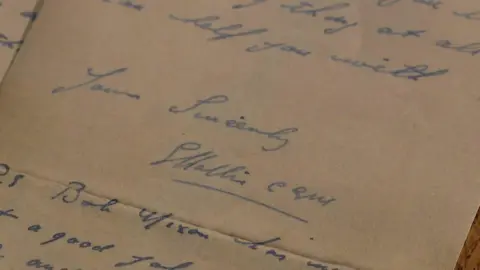World
Stan Hollis: D-Day hero’s letters unearthed for the first time

Jonny Manning,BBC News, North East and Cumbria
 Trustees of the Green Howards Museum
Trustees of the Green Howards MuseumA letter has emerged that has shed more light on the life of the only soldier to be awarded a Victoria Cross on D-Day.
Sgt Maj Stan Hollis, from Middlesbrough, wrote the letter to the family of Pte John Armstrong following his death.
The document has been handed to The Green Howards Museum, in Richmond, North Yorkshire to be used as part of its D-Day 80th anniversary event.
Amanda Hart, Sgt Maj Hollis’ granddaughter, said the letter showed he cared for the friends he fought beside.
Sgt Maj Hollis was 31 years old when he took part in the assault on Gold Beach on 6 June 1944.
He was commended for two acts of valour during the Normandy landings.
He cleared a pillbox and trenches north of Ver-sur-Mer and later rescued soldiers under fire in the village of Crépon.

His letter, dated 22 August 1944, was written to Pte Armstrong’s parents William and Emily, who lived in Langley on Tyne, near Hexham, in Northumberland.
Sgt Maj Hollis wrote that Pte Armstrong had stood on a mine but said he had expected his friend to recover from his injuries.
He describes Pte Armstrong as “the bravest man” the 6th Battalion ever had.
“I count it one of the finest things, that I could claim Johnnie Armstrong as one of my best friends,” the letter said.
Pte Armstrong was given a medal for distinguished conduct.

Amanda Hart said the letter showed her grandfather had real relationships with the men he served with.
“It shows he did care about his friends that he was fighting with and that he had a great memory for names,” she said.
“What he did, and what other people did that day, was amazing and it lets us be what we are today.”








:max_bytes(150000):strip_icc()/roundup-writereditor-loved-deals-tout-f5de51f85de145b2b1eb99cdb7b6cb84.jpg)


